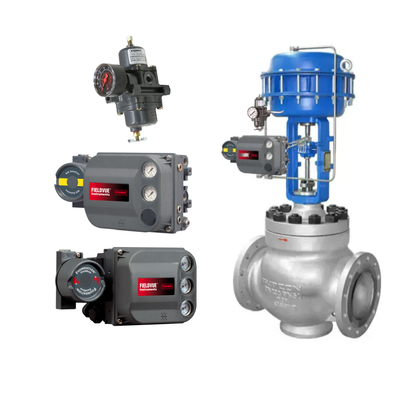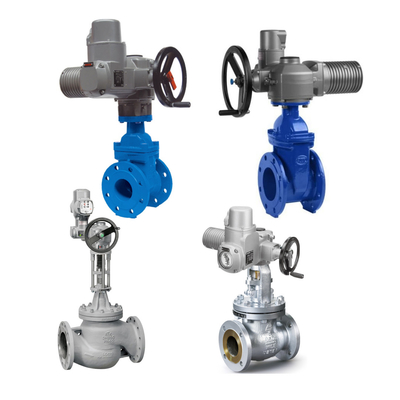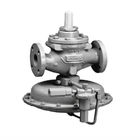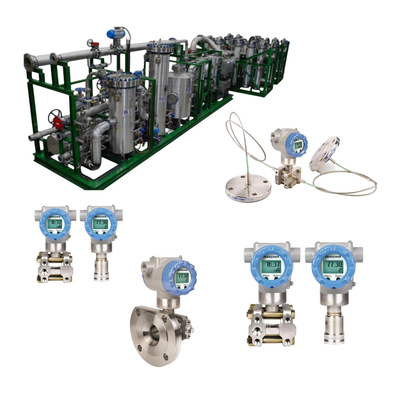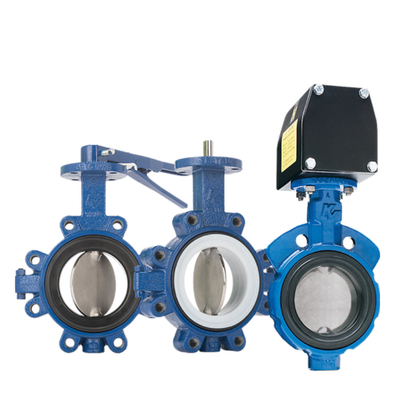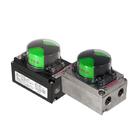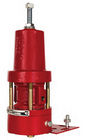Различия между шаровыми кранами и дисковыми затворами
В промышленных системах трубопроводов, оборудовании для управления потоком и автоматизации, шаровые краны и дисковые затворы являются двумя распространенными типами клапанов, широко используемыми в таких отраслях, как нефтегазовая промышленность, водоочистка, химическая переработка и строительство. Шаровые краны известны своей надежной герметичностью, в то время как дисковые затворы превосходят по легкости и экономичности. Понимание различий между шаровыми кранами и дисковыми затворами имеет решающее значение для инженеров, специалистов по закупкам и профессионалов отрасли. Эти знания не только помогают в выборе подходящего типа клапана, но и оптимизируют эффективность системы, снижают затраты и обеспечивают безопасную эксплуатацию. Согласно отчету Valve Market Report за 2025 год, мировой рынок шаровых кранов и дисковых затворов превысил 50 миллиардов долларов США, а прогнозируемый совокупный среднегодовой темп роста (CAGR) составляет 5,2%. В этой статье представлен подробный, доступный анализ определений, принципов работы, преимуществ и недостатков, сценариев применения и основных различий между шаровыми кранами и дисковыми затворами. Она предлагает практические идеи, которые помогут читателям легко понять и применить эти знания.
Основные определения шаровых кранов и дисковых затворов
Во-первых, давайте уточним понятия шаровых кранов и дисковых затворов. Шаровой кран (Ball Valve) - это тип клапана, в котором в качестве запорного механизма используется сферический элемент. Сфера содержит центральное отверстие. При повороте на 90 градусов отверстие совмещается с трубопроводом, чтобы обеспечить поток жидкости; при полном повороте оно полностью блокирует поток. Основные компоненты включают шар, шток, седло и привод (ручной, пневматический или электрический). Конструкция шарового крана возникла в середине XX века в связи с потребностями нефтяной промышленности, подчеркивая нулевую утечку и быстрое срабатывание.
Напротив, в дисковом затворе используется дискообразный запорный элемент (известный как диск). Поток жидкости регулируется поворотом штока клапана на 90 градусов. Диск расположен по центру внутри корпуса клапана, открываясь при параллельном расположении к трубопроводу и закрываясь при перпендикулярном. Дисковые затворы, имеющие простую конструкцию, состоящую из корпуса клапана, диска, штока клапана и уплотнительного кольца, обычно используются в трубопроводах большого диаметра. История дисковых затворов восходит к 1930-м годам, в основном для систем водоочистки.
Хотя и шаровые краны, и дисковые затворы являются клапанами с четвертьоборотным ходом (требующими только поворота на 90 градусов для открытия или закрытия), они существенно различаются по конструкции: шаровые краны полагаются на сферическое уплотнение между шаром и седлом, в то время как дисковые затворы зависят от краевого уплотнения между диском и седлом. Это фундаментальное различие напрямую влияет на их производительность и пригодность для различных применений.

Роторный регулирующий клапан серии Masoneilan 31000
Принципы работы шаровых кранов и дисковых затворов
Понимание принципов работы шаровых кранов и дисковых затворов помогает прояснить их различия. Шаровой кран работает на основе вращательного движения сферической пробки. Когда рукоятка или привод приводят в движение шток клапана, шар вращается. Если отверстие шара расположено параллельно оси трубопровода, жидкость течет полностью открыто; при перпендикулярном положении поверхность шара плотно прилегает к седлу. Уплотнение в шаровых кранах обычно выполняется с использованием мягких уплотнений (например, PTFE) или твердых уплотнений (например, металл), что делает их пригодными для работы в условиях высокого давления. Их характеристики потока показывают линейность, что идеально подходит для точного управления.
Дисковые затворы работают аналогично, но вращающийся диск создает сопротивление в потоке жидкости. При открытии диск располагается параллельно направлению потока, сводя к минимуму сопротивление. При закрытии диск поворачивается перпендикулярно, полагаясь на краевые уплотнительные кольца (например, резиновые или металлические) для блокировки жидкости. Дисковые затворы обеспечивают надежные возможности регулирования потока, хотя небольшое сопротивление сохраняется даже при полном открытии. Они часто оснащаются редукторами или приводами для удобства работы в больших диаметрах.
С принципиальной точки зрения, шаровые краны обеспечивают превосходное уплотнение с нулевой утечкой, в то время как дисковые затворы подчеркивают быстрое открытие/закрытие и модуляцию потока. Это делает шаровые краны более популярными в приложениях, требующих абсолютной герметичности, в то время как дисковые затворы превосходят в сценариях управления потоком.

Дисковый затвор Masoneilan с утечкой
Основные различия между шаровыми кранами и дисковыми затворами
Шаровые краны и дисковые затворы различаются по нескольким аспектам. Ниже приводится сравнение по структуре, производительности, стоимости и областям применения, предлагающее содержательный анализ.
Структурные различия
Шаровой кран: Имеет сферический сердечник, обычно изготовленный из нержавеющей стали или латуни. Гладкая поверхность обеспечивает надежное уплотнение. Шаровые краны более громоздки, требуя больше места, особенно для больших диаметров. Корпуса шаровых кранов могут быть однокомпонентными, двухкомпонентными или трехкомпонентными, что облегчает техническое обслуживание.
Дисковый затвор: Имеет тонкий диск в качестве основного компонента, с тонким корпусом и компактной общей конструкцией. Дисковые затворы доступны в конструкциях типа "пластина", фланцевых или сварных, что обеспечивает простую установку. Диск может быть центрированным или эксцентриковым, при этом эксцентриковые конструкции обеспечивают превосходные характеристики уплотнения.
Ключевая идея: Шаровая конструкция шаровых кранов повышает износостойкость, в то время как диски дисковых затворов подвержены эрозии жидкости, что делает их подходящими для чистых сред.
Различия в производительности
Характеристики уплотнения: Шаровые краны обеспечивают двунаправленное уплотнение с нулевой утечкой, соответствующее стандартам API 598, подходящее для газов и жидкостей высокого давления. Дисковые затворы обеспечивают хорошее уплотнение, но могут проявлять незначительную утечку, особенно при высоком давлении.
Диапазон давления и температуры: Шаровые краны выдерживают давление до класса 2500 (прибл. 170 бар) и температуры от -196°C до 650°C. Дисковые затворы имеют более низкие значения давления, обычно класс 150-300 (прибл. 10-20 бар), и температурные диапазоны от -29°C до 425°C.
Управление потоком: Полностью открытые шаровые краны обеспечивают нулевое сопротивление с высокими значениями Cv (высокая пропускная способность). Полностью открытые дисковые затворы показывают падение давления на 5-10%, что делает их непригодными для точного дросселирования.
Скорость работы: Оба работают быстро (поворот на 90 градусов), но шаровым кранам требуются более крупные приводы из-за более высокого крутящего момента; дисковым затворам требуется меньше крутящего момента для более легкой работы.
Ключевые данные: Согласно отчетам Semcor, шаровые краны показывают почти нулевое падение давления, в то время как дисковые затворы могут достигать до 10% давления в трубопроводе. Это имеет решающее значение для энергоэффективных конструкций.
Различия в стоимости и техническом обслуживании
Стоимость: Дисковые затворы более экономичны, особенно для размеров >6 дюймов, составляя всего от 1/2 до 1/3 стоимости шаровых кранов. Шаровые краны предлагают лучшую стоимость для меньших размеров (<2 дюймов).
Техническое обслуживание: Дисковые затворы имеют простую конструкцию с легко заменяемыми дисками, что приводит к низким затратам на техническое обслуживание. Шаровые краны требуют разборки шара для технического обслуживания, что сложнее, но обеспечивает увеличенный срок службы (до 100 000 циклов).
Вес и установка: Дисковые затворы легкие (всего одна треть веса шаровых кранов того же размера) и требуют минимального пространства для установки. Шаровые краны тяжелее и лучше подходят для стационарных установок.
Практические рекомендации: Для проектов с большими трубами и ограниченным бюджетом выбирайте дисковые затворы; отдавайте предпочтение шаровым кранам, когда требуется высокая надежность.
Различия в сценариях применения
Шаровые краны: Широко используются в нефтегазовой, химической и фармацевтической промышленности, где требуется плотное перекрытие, например, в газопроводах и гидравлических системах. Шаровые краны превосходны при передаче газа под высоким давлением.
Дисковые затворы: Подходят для водоочистки, отопления, вентиляции и кондиционирования воздуха, а также для пищевой промышленности, работающей со средами с высоким расходом и низким давлением, например, для регулирования потока на очистных сооружениях.
Реальные примеры: В проектах по добыче сланцевого газа в США шаровые краны обеспечивают нулевую утечку на устьях скважин; в строительстве китайских плотин дисковые затворы регулируют поток воды большого диаметра, обеспечивая экономию средств.
Руководство по выбору шаровых кранов и дисковых затворов
Выбираете между шаровыми кранами и дисковыми затворами? Вот практическое руководство:
Размер трубы: Выберите шаровые краны для размеров <6 inches; choose butterfly valves for sizes>6 дюймов.
Тип среды: Используйте шаровые краны для коррозионных сред или сред высокого давления; используйте дисковые затворы для чистых применений с высоким расходом.
Рабочая частота: Выберите шаровые краны для высокочастотных циклов включения/выключения (долговечные); выберите дисковые затворы для низкочастотных циклов (экономичные).
Бюджет и пространство: Отдавайте предпочтение дисковым затворам при ограниченном бюджете и пространстве.
Соответствие стандартам: Проверьте соответствие стандартам API и ANSI для обеспечения безопасности.
Сравнительная таблица (для простоты понимания):
| Аспект |
Шаровой кран |
Дисковый затвор |
| Конструкция |
Вращающаяся сфера |
Вращающийся диск |
| Уплотнение |
Нулевая утечка |
Возможна небольшая утечка |
| Стоимость |
Высокая (большой диаметр) |
Низкая |
| Вес |
Тяжелый |
Легкий |
| Применение |
Высокое давление, газы |
Высокий расход, низкое давление |
Понимая эти различия, читатели могут выбрать подходящий клапан в соответствии с требованиями, избегая распространенных ошибок, таких как использование дисковых затворов в условиях высокого давления, что может привести к утечке.
Будущие тенденции для шаровых кранов и дисковых затворов
С появлением Индустрии 4.0 шаровые краны и дисковые затворы претерпевают интеллектуальную трансформацию. Интеллектуальные шаровые краны интегрируют датчики для обеспечения удаленного мониторинга, в то время как электрические дисковые затворы поддерживают подключение к IoT для повышения операционной эффективности. На фоне растущей обеспокоенности экологией, шаровые краны с низким уровнем выбросов и экологически чистые дисковые затворы — такие как те, которые изготовлены из бессвинцовых материалов — станут основными. Прогнозы рынка показывают, что к 2025 году спрос на шаровые краны и дисковые затворы в Азиатско-Тихоокеанском регионе составит 40% от мирового потребления, что обусловлено инвестициями в инфраструктуру.

Цифровой позиционер клапана Masoneilan SVI2
Xiangjing: Ваш эксперт по решениям для клапанов
Shanghai Gongboshi (Xiangjing, официальный сайт: www.shgongboshi.com), профессиональный поставщик услуг с более чем двумя десятилетиями глубокого опыта в индустрии клапанов, специализируется на поставке шаровых кранов и дисковых затворов, а также комплексных решений. Мы поставляем продукцию премиум-класса для шаровых и дисковых затворов от всемирно известных брендов, таких как Emerson, IMI PLC, Flowserve и Weir Group, наряду с другими высококлассными мировыми брендами. Ориентируясь на нефтегазовый сектор, решения Gongboshi для шаровых кранов обеспечивают нулевую утечку при высоком давлении, в то время как наши дисковые затворы оптимизируют управление потоком с высоким расходом.
Например, в нефтяных проектах наши шаровые краны Emerson Fisher обеспечивают точное уплотнение, снижая при этом энергопотребление на 20%. Дисковые затворы Weir Group обеспечивают экономичную установку в газопроводах. Gongboshi также предоставляет индивидуальные технические услуги, включая консультации по выбору, руководство по установке и поддержку технического обслуживания, помогая клиентам сократить время простоя на 30% и повысить операционную эффективность. Посетите наш официальный сайт по адресу www.shgongboshi.com чтобы узнать больше о решениях для шаровых кранов и дисковых затворов.

 Ваше сообщение должно содержать от 20 до 3000 символов!
Ваше сообщение должно содержать от 20 до 3000 символов! Пожалуйста, проверьте свою электронную почту!
Пожалуйста, проверьте свою электронную почту!  Ваше сообщение должно содержать от 20 до 3000 символов!
Ваше сообщение должно содержать от 20 до 3000 символов! Пожалуйста, проверьте свою электронную почту!
Пожалуйста, проверьте свою электронную почту! 
